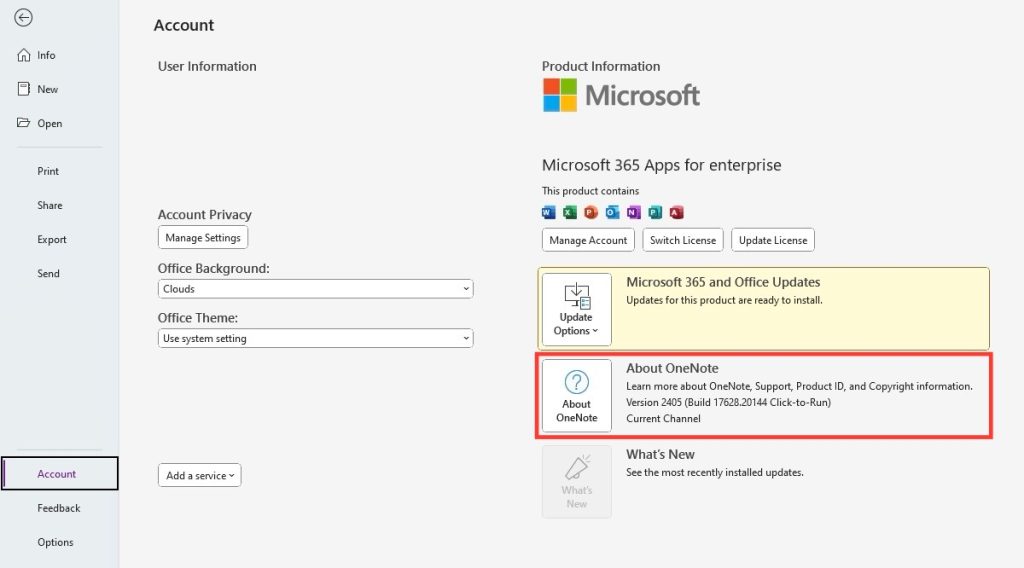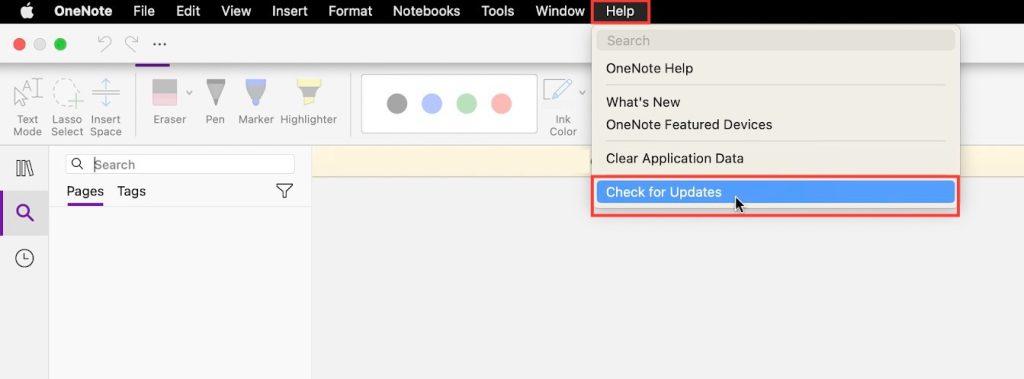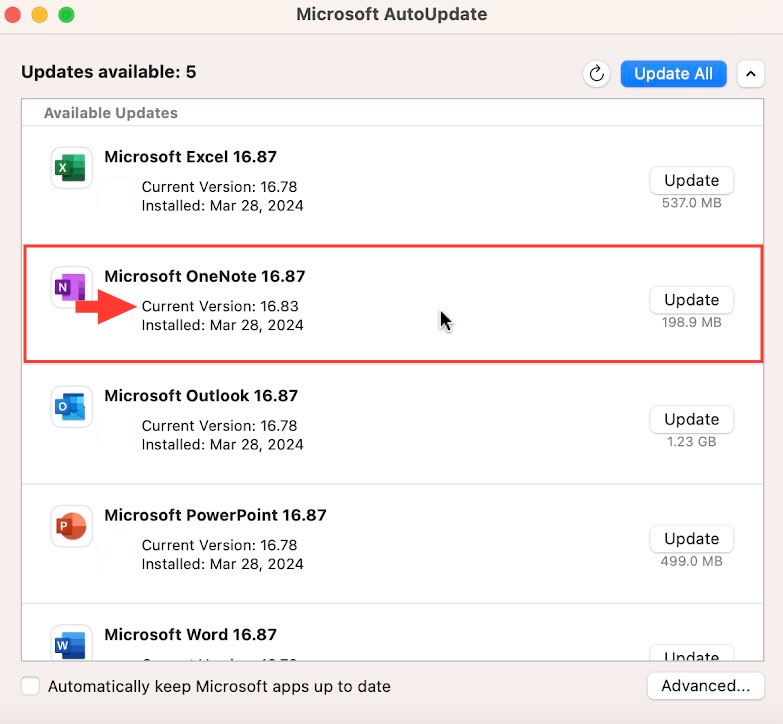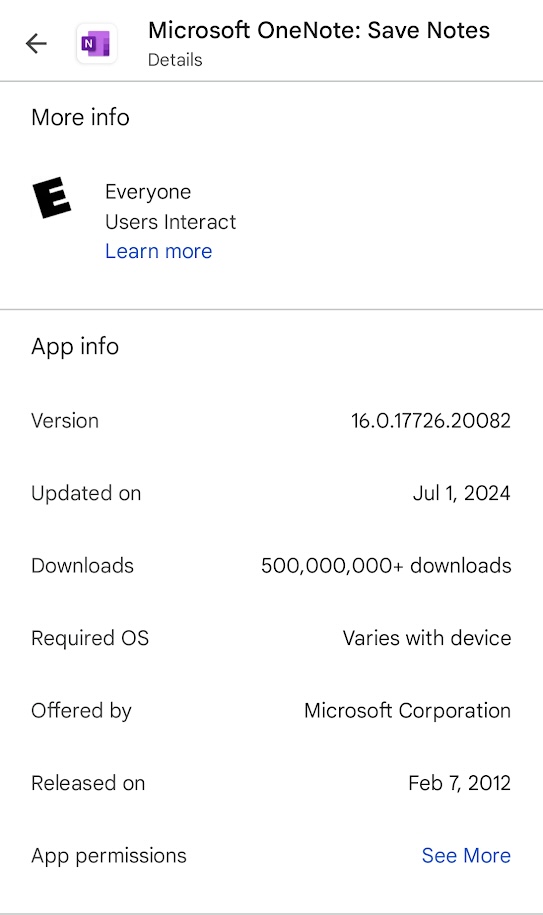Key Takeaways
- To determine the Microsoft OneNote version you have, start by searching for “OneNote” in the Start menu; “OneNote” will indicate OneNote 2016, while “OneNote for Windows 10” specifies that version.
- If uncertain, look at the OneNote icon or the application’s Ribbon: OneNote 2016 features a complex ribbon with many tabs/buttons, the OneNote App for Windows 10 has a simplified ribbon, and OneNote Online displays its name above the Ribbon to the right of the “waffle” icon.
- Note that if the icon and Ribbon design don’t match the descriptions, you might be using an older version of OneNote such as OneNote 2010 or 2013.
Why Knowing Your Version Matters
Understanding the specific version of OneNote that I’m using is crucial because each version comes with its own set of features, capabilities, and limitations. I’ve found that certain integrations with other Microsoft Office tools or compatibility with various devices can greatly depend on the OneNote edition installed. Furthermore, as Microsoft periodically updates and improves their applications, staying informed ensures that I can take full advantage of the latest enhancements, security updates, and performance improvements. This knowledge is not just helpful for personal use but essential in professional settings where collaboration and file sharing is common, ensuring that everyone is on the same page, quite literally.
Table of Contents
Identifying Your OneNote Edition
OneNote vs. OneNote for Windows 10
When it comes to the differences between OneNote and OneNote for Windows 10, I’ve learned that the most prominent distinction lies in how notebooks are managed. OneNote offers me the flexibility to store notebooks on my device or in the cloud. But with OneNote for Windows 10, all my notebooks are tethered to the cloud, specifically my OneDrive account, which makes these notebooks inaccessible offline, a limitation for those occasions when I’m not connected to the internet.
Moreover, OneNote provides a more expanded canvas, reminiscent of editing in a Microsoft Word document. This allows for smart note-taking capabilities, such as creating tags which are incredibly useful for categorizing tasks and meeting notes. Another significant benefit is that OneNote gives me immediate access to an array of features, including a ‘History’ function akin to a version history or tracked changes feature—one that’s been indispensable for tracking the evolution of my collective thoughts and notes.
On the other hand, OneNote for Windows 10 might require a bit of work around, as it isn’t directly compatible with Outlook for emailing pages. It tends to push the use of Windows Mail or People, which can be restrictive.
One pleasing aspect of OneNote for Windows 10 is its clean user interface, which offers more white space around elements, possibly contributing to a less cluttered note-taking experience. But when it comes to productivity and seamless integration with other Microsoft apps, OneNote tends to edge out its counterpart for most users—including myself and my colleagues at ramsac.
The Color Scheme and Name Game
Discerning which OneNote version I’m currently using can be surprisingly straightforward once I pay attention to the color scheme and the app name. For those like me who tend to overlook these details, here’s what I’ve discovered:
OneNote for Windows 10, designed specifically with Windows 10 in mind, showcases a brighter and more vibrant purple color scheme. This contrasts sharply to the subdued hues of OneNote, which often matches the color theme of the overall Office suite installed on my system, such as Dark Gray or Colorful. The difference is not just cosmetic—OneNote for Windows 10’s color choice represents its modern and clean interface aimed at a more touchscreen-friendly experience.
Additionally, the name in the title bar or the app list is a dead giveaway. If it reads ‘OneNote for Windows 10,’ it’s the app version, while ‘OneNote’ or ‘OneNote 2016’ refers to the desktop version, which might be pre-installed with the Microsoft Office package or downloaded separately. By being observant of these nuances, I can effortlessly identify which version I’m using—which comes in handy especially when troubleshooting or seeking specific features that might be version-exclusive.
Step-by-Step Guide to Determine Your OneNote Version
Checking Version within OneNote Applications
Checking OneNote Version on Desktop (Windows)
STEP 1: Open OneNote.
STEP 2: Click on File in the upper left corner.
STEP 3: Select Account from the menu.
Under Product Information, find the version number next to About OneNote.
Checking OneNote Version on Mac
STEP 1: Open OneNote.
STEP 2: Go to the top menu bar and click on Help.
STEP 3: Select Check for Updates.
The Microsoft AutoUpdate tool will display your current version and any available updates.
Checking OneNote Version on Mobile Devices
STEP 1: Open the app store on your mobile device.
STEP 2: Open the App Store or the Google Play Store for Android.
STEP 3: Go to My apps & games (Android) or your profile (iOS) to find your installed apps.
STEP 4: Locate OneNote in the list of apps.
STEP 5: View the app details to find the current version number in the description.
Knowing my OneNote version allows me to troubleshoot issues more efficiently, track feature updates, and align with compatibility requirements for certain integrations.
Locating OneNote Version through System Settings
To locate your OneNote version through system settings, a comprehensive method that never fails me is navigating the list of installed applications on my computer. For Windows users, it’s a matter of accessing ‘Apps & Features’ where I can scroll down to Microsoft OneNote. The version there is typically displayed under the application name or upon selecting it, additional details including the precise version number and installation date become visible.
On a Mac, finding my OneNote version is simply a matter of opening OneNote, clicking on ‘OneNote’ in the menu bar, and selecting ‘About OneNote.’ A window pops up displaying the version number along with other relevant software information.
The clarity of having this information is beneficial for ensuring compatibility with office suites and operating systems. It also informs my decision when it comes to updates and makes me aware of any impending end-of-support dates.
Version-Specific Features and Capabilities
Exclusive Features in Different OneNote Editions
Exclusive features in different OneNote editions often dictate my choice when it comes to selecting the right tool for the job. The desktop version of OneNote typically includes a full array of features that cater to the more advanced user. This includes things like the ability to record audio while taking notes, template support, local notebook support, and more extensive integration with other Office apps, such as directly embedding Excel files into a OneNote page.
OneNote for Windows 10, meanwhile, has a more streamlined touch-friendly interface and offers unique features such as improved ink features, a math assistant, and a new and improved search function. It also includes a feature that’s been useful to me – the immersive reader for accessibility.
OneNote 2016 brought back some of these advanced features like local notebook support due to user demand, showing Microsoft’s commitment to customer feedback. Yet, it’s the little details in OneNote for Windows 10, such as a more colorful interface and a Sticky Notes integration, that appeal to those like me who value a simplistic yet functional design.
- Local Notebook Support: Desktop OneNote allows users to save notebooks on their computer or network drive.
- Audio and Video Recording: OneNote desktop users can record meetings or lectures directly within the app.
- Immersive Reader: Found in OneNote for Windows 10, this tool improves reading and comprehension.
- Ink to Text/Shape: OneNote for Windows 10 converts handwritten notes to typed text or shapes for ease of organization.
- Template Support: The desktop version provides several templates, enhancing the organization of notes.
While both editions have strong merit, my choice is generally navigated by the nature of the work I’m engaged in or the particular environment I’m operating within.
Compatibility Considerations Across Versions
Compatibility is a key factor that I often have to consider when using OneNote, particularly when working in collaborative settings or dealing with various devices and software suites. OneNote’s desktop version is generally more compatible with older versions of Windows and the full Microsoft Office suite, which can be a significant advantage in a corporate environment where legacy systems are still in place.
On the other hand, OneNote for Windows 10 is optimized for touch and pen usage, making it a go-to choice for tablets and touchscreen laptops where ease of use is a major concern. However, it relies more heavily on cloud services for storage and synchronization, so it’s crucial to have a stable internet connection to make the most out of its features.
There are scenarios where exclusive features available in one version are not supported in the other, which might affect productivity. For instance, I know that when collaborating with others, it’s essential to make sure we’re all using the same version to maintain feature compatibility.
Compatibility considerations often come down to:
- System Requirements: Ensuring your OS supports the OneNote version.
- Office Integration: How well it works with other Office apps.
- Collaboration: Whether co-editing and sharing work seamlessly across versions.
- File Formats: Knowing file formats supported by the OneNote version in use.
- Peripheral Support: Ensuring devices like digital pens are supported.
Armed with knowledge about compatibility considerations, I can confidently navigate each version according to the specific demands of my projects.
Updating Your Microsoft OneNote
Addressing Common Update Issues
I often find that encountering issues while updating OneNote is not uncommon. The key is knowing the typical troubleshoots to overcome these snags. Sometimes, updates fail to initiate or complete due to network problems or server unavailability. In this case, a simple retry after some time or a network setting check usually resolves the problem.
I also check permissions if I hit a stumbling block, especially in a managed IT environment where administrative rights might be needed for updates. If automatic updates aren’t working, I make sure the settings in the Microsoft AutoUpdate tool allow such updates.
On rare occasions, updates can encounter conflicts with antivirus software; temporarily disabling the antivirus during the update process can sidestep this. Finally, restarting the device can clear any potential glitches preventing the update.
When I need more help:
- Refer to OneNote’s official forums or support pages for solutions.
- Reach out to the IT support team if I am in a work setting.
- Consult Microsoft’s troubleshooting guides specifically tailored for updating issues.
Additional Resources for Microsoft OneNote Users
Where to Find Help and Tutorials
When I or any other OneNote user needs help and tutorials to navigate through this multifaceted tool, Microsoft’s official OneNote Help & Learning page is my primary go-to destination. It’s an extensive resource offering everything from basic tasks to more complex note-taking strategies.
Additionally, the Microsoft 365 Training platform provides a rich collection of training courses for OneNote and other Office applications, perfect for users seeking structured guidance.
If I have a specific question or need expert advice, the Microsoft Tech Community is a goldmine. There, I connect with other users and experts who have a wealth of knowledge on OneNote and are usually eager to lend a hand.
For a comprehensive understanding of the finer nuances of OneNote, “OneNote Tips & Tricks” is a fantastic free eBook that can serve as an invaluable guide.
Engaging with the OneNote Community
Engaging with the OneNote community has been invaluable in expanding my knowledge and troubleshooting skills. The OneNote community is a vibrant ecosystem comprising forums, social media groups, and user-led websites.
I typically dive into the Microsoft OneNote User Community on Facebook for informal advice or to share insights with peers. For a more structured dialogue, I utilise the official Microsoft Community forums where I track threads related to my queries or contribute to discussions.
The OneNote Subreddit is another digital corner where enthusiasts and professionals converge to discuss tips, workarounds, and personal experiences. Engaging here often leads to discovering innovative uses of OneNote I hadn’t considered.
For those of us who prefer live interactions, webinars and virtual meet-ups organized by the user community offer opportunities to learn and network with fellow OneNote aficionados.
FAQ: Frequently Asked Questions about OneNote Versions
How Can I Tell If I Have OneNote or OneNote for Windows 10?
I can quickly tell if I have OneNote or OneNote for Windows 10 by checking the app name and color scheme. OneNote for Windows 10 usually has a brighter purple icon and is labeled as such, while the traditional OneNote, also known as OneNote 2016, has a more muted icon and lacks the “for Windows 10” tag.
Is There a Difference in Syncing Between OneNote Versions?
Yes, there is a difference. OneNote for Windows 10 exclusively uses cloud syncing with OneDrive, which tends to be simpler and more streamlined. The desktop version of OneNote allows for both cloud and local notebook storage, offering more versatility but potentially requiring manual sync settings.
Will My Current Version of OneNote Be Supported in the Future?
OneNote for Windows 10 is set to be supported until October 2025. For other versions, particularly OneNote 2016 which has been re-integrated into Microsoft Office, support aligns with the lifecycle of the Office version it’s a part of. It’s best to check Microsoft’s lifecycle policy for specifics.
John Michaloudis is a former accountant and finance analyst at General Electric, a Microsoft MVP since 2020, an Amazon #1 bestselling author of 4 Microsoft Excel books and teacher of Microsoft Excel & Office over at his flagship MyExcelOnline Academy Online Course.












